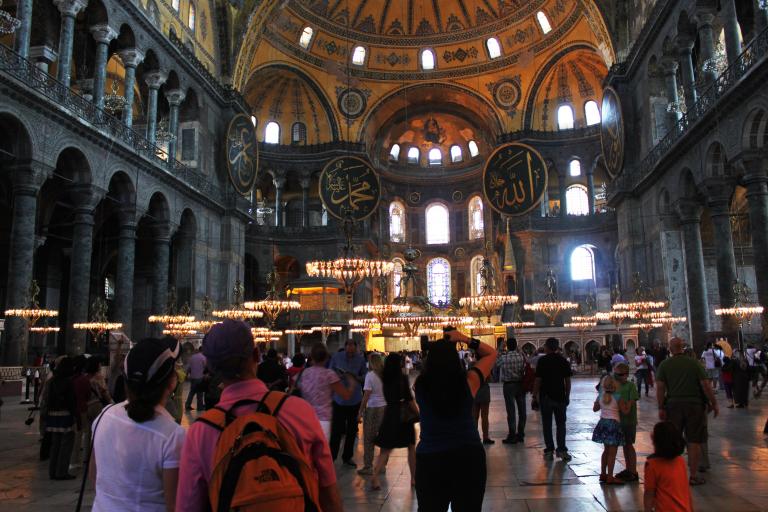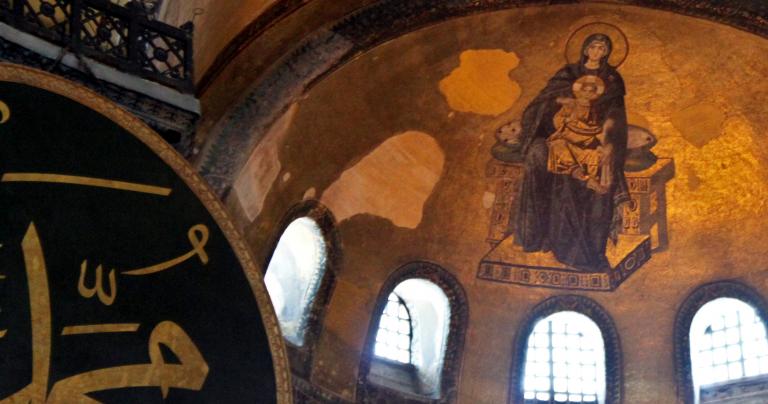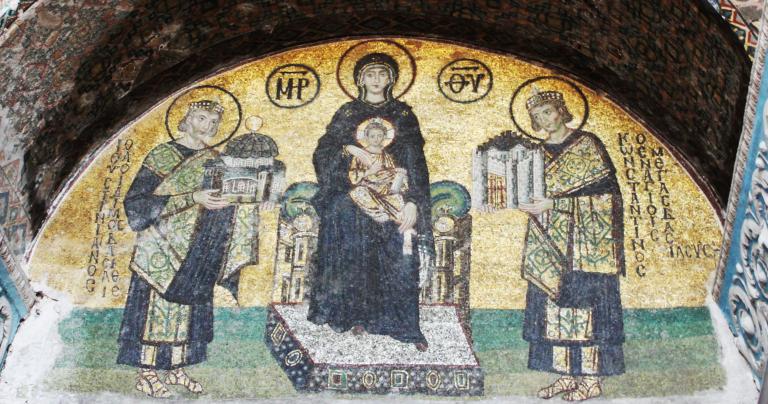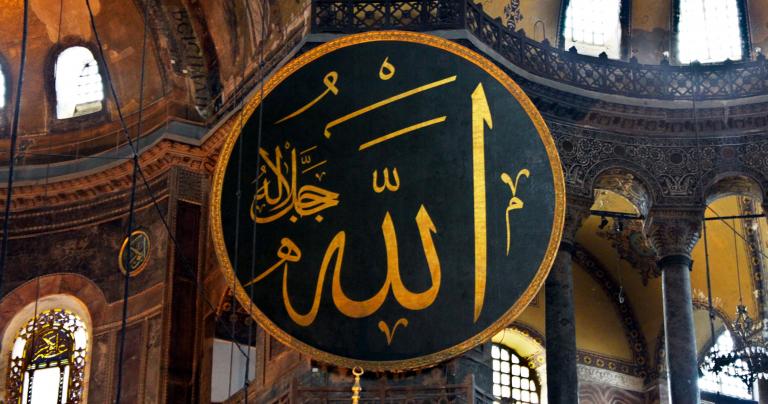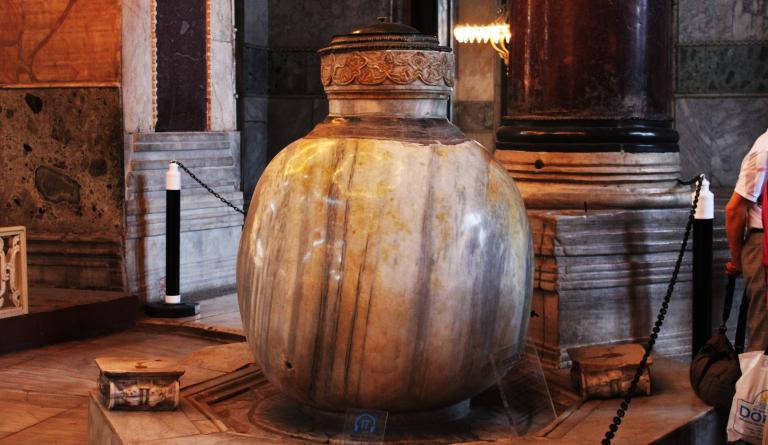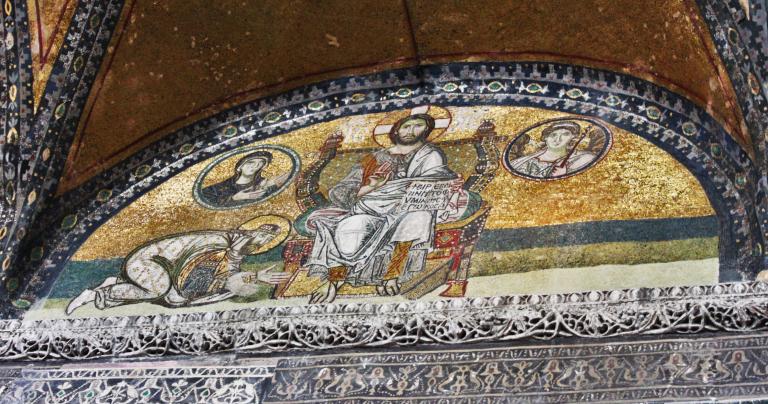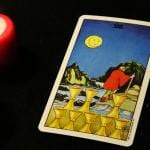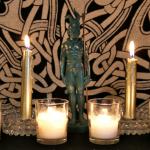Earlier this month, Turkish President Recep Tayyip Erdogan ordered that Hagia Sophia, a UNESCO World Heritage Site in Istanbul, be converted from a museum into a mosque. The Wild Hunt covered this story, including the Pagan roots of some of Hagia Sophia’s architecture.
I visited Istanbul in 2012. We toured the Hippodrome (which includes a column with twined serpents taken from the Temple of Apollo at Delphi), the Blue Mosque, Topkapi Palace (home of the sultans of the Ottoman Empire), and perhaps my favorite, the Basilica Cistern – favorite in part because it was a lot cooler underground on a very hot day, and also because it was one of the locations in the James Bond movie From Russia With Love.
But perhaps the most beautiful of all these sites was Hagia Sophia. It was built as a cathedral in 537 and was the largest cathedral in the world for almost a thousand years. When the Ottomans defeated the Byzantines in 1453, Hagia Sophia was converted to a mosque. It was turned into a museum in 1935 after Turkey became a secular republic.
I had a wonderful – if brief – time in Turkey. When I got back, I wrote a blog post titled Islam in Turkey. I also freely admitted I should have titled that post “The Observations And Impressions Of An American On His First Visit To A Country Where Islam Is The Predominant Religion.”
Our tour guides – licensed by the government – went to great lengths to emphasize that while the vast majority of Turks are Sunni Muslims, Turkey is officially a secular state. They wanted to distance themselves from officially Islamic states like Iraq, Iran, and Saudi Arabia.
That was 2012.
Since then, President Erdogan has moved the country toward a more Islamist position, and himself toward a dictatorial position – much like Putin in Russia, and like some other elected leaders are trying to do in other countries. This BBC story from 2019 has plenty of details, and links to still more. This New York Times piece sheds considerable light on Erdogan’s motivation and thinking around reconverting Hagia Sophia to a mosque.
Last Friday, July 24, prayers were held in Hagia Sophia for the first time in 86 years. Erdogan himself read from the Quran during the service. This story and video essay from Al Jazeera describe the changes.
The marble floor has been covered in carpet, and movable curtains covered the Christian artwork during the prayers. Admission is now free, but tours will be halted for all five prayers, which will be held daily.
Orthodox Christians are particularly upset – Hagia Sophia was the center of the Greek Orthodox Church for most of its time as a church. Catholics, Protestants, and others have also expressed dismay. Pope Francis said “I think of Hagia Sophia, and I am very saddened.”
Rather than analyzing the politics of this transition, I’d rather share some pictures and focus on my memories of Hagia Sophia in better times.
The first thing I noticed upon walking into Hagia Sophia is that it didn’t look like a church. Or at least, it didn’t look like what I expected a church to be. It hasn’t been a church in over 500 years – of course there’s no altar, no pulpit, and no pews. It almost certainly never had pews – they’re a rather late invention, and mosques don’t have them.
The architecture is Byzantine – the building is almost square. It doesn’t resemble the Gothic cathedrals of Europe, which are rectangular and cruciform.
There were no statues or shrines – this was a museum. The Christian artwork high on the walls stands in contrast with the eight large hanging “calligraphic roundels” bearing the names of Allah, Muhammad, and six other key figures in the foundation of Islam. Islam prohibits physical representations of people (they take the “no graven images” thing even more seriously than Evangelical Christians) so calligraphy is often used for decoration. One website said roundels like these are unique to Ottoman mosques, but a brief internet search turned up no examples other than Hagia Sophia.
The Wild Hunt piece discussed the marble columns brought from the Temple of Artemis in Ephesus. Hagia Sophia is also home to two very large lustration urns (used to hold oil or water for ritual cleansings) each carved from a single block of marble. They were made around 200 BCE, meaning they are Pagan in origin. They were lost and then rediscovered in Pergamum (about 240 miles southwest of Istanbul) in the mid-1500s. Sultan Murad III had them brought to Hagia Sophia.
Unlike the Gothic cathedrals I’ve visited, I got no sense of spiritual power and depth at Hagia Sophia. Maybe it was just me being a tourist (though I had no such problems at the Pagan sites I visited on the same trip) or maybe it was the crowds. We were there on a Sunday, which isn’t a holy day in the Islamic world but is still the weekend. It’s a popular tourist spot.
But this was a museum, not a church or a temple. And before that it was a mosque. For whatever reason, I didn’t connect with the place.
That didn’t keep me from appreciating its history and beauty.
Erdogan has promised that Hagia Sophia will remain open to tourists outside of prayer times, much like the nearby Blue Mosque. Plans are to cover the Christian artwork during prayers and then uncover it afterwards. When Hagia Sophia was previously a mosque, the Christian artwork was permanently covered with plaster, which at least didn’t destroy it – it was restored in 1935. Perhaps future visitors who are Pagan, Christian, or followers of other religions (or of no religion) will be able to see and appreciate Hagia Sophia much as I did in 2012.
Still, when any religion claims ownership of a World Heritage Site that is significant to many people from different religions, it makes the world a little smaller and a little poorer.
And I remain thankful I was able to see Hagia Sophia when it was a museum.


